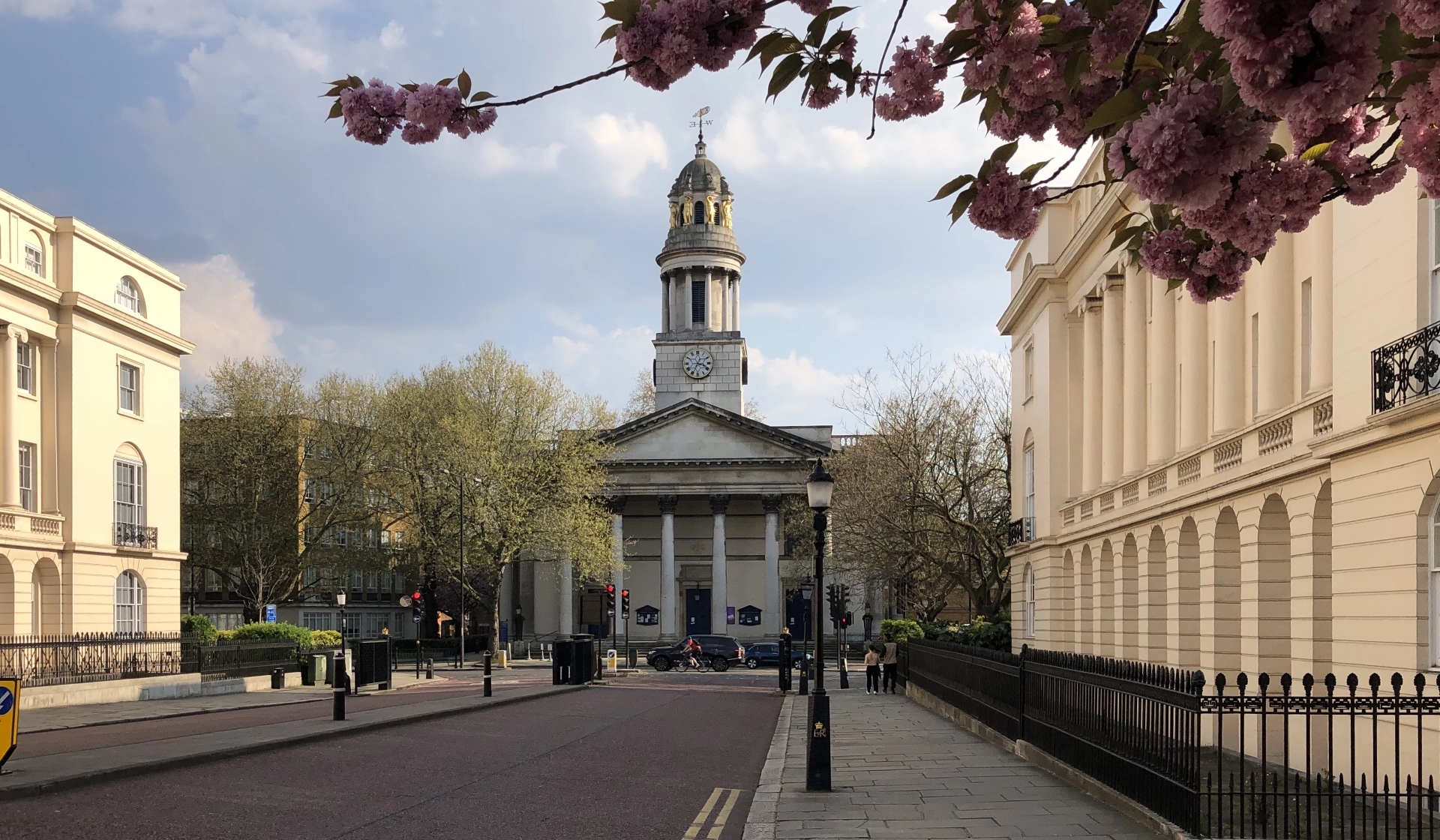Heritage: The Four Churches
The Fourth Parish Church
The wealthy had already begun to colonise the desirable parish of St Marylebone, and this continued during the nineteenth century. To cater for the expanded population, the current St Marylebone Parish Church was built in 1813 and consecrated in 1817, and was designed by fashionable architect Thomas Hardwick. Hardwick designed the parish church with a Corinthian portico inspired by the Pantheon of Rome to ensure that the exterior reflected the grandeur and burgeoning prosperity of Marylebone. It was built on what was then the New Road, a bypass on the very edge of London, and it faced open country towards Hampstead and Highgate.
This glorious new parish church could hold a congregation of 3,000 and had two galleries – only full one and a small part of the second is left now. The parish was now home to some famous faces: Charles Dickens and his family lived here and 7 of his 10 children were baptised in the font you can still see today. Florence Nightingale had a hospital in nearby Harley Street and Ada Lovelace, computing pioneer, also lived in the parish. Poets Elizabeth Barrett and Robert Browning were married here too.
The interior looks quite different to the original. That’s because it was altered in 1883 at the instigation of an energetic new rector, the Reverend William Barker. The main features of the alterations were the removal of the south wall, the creation of a chancel for a robed choir and a sanctuary within the new apse (the end of the choir). The upper galleries on the sides of the parish church were removed and new mahogany choir stalls, with carved angel ends, were installed. Marble mosaic covered the floor and a marble pulpit and balustrades were built, the latter bearing the letters from the Greek alphabet for Alpha and Omega.
During the Second World War, Marylebone was heavily bombed and the spectacular stained-glass windows were blown out. Thankfully, the surviving fragments of these windows were salvaged to comprise the borders of the repaired windows, weaving this social historical evidence of the war into the life of the parish church today and providing a testament to the resilience of St Marylebone and its community.
Later in the 20th century, the parish church found another way to offer compassion and care to the parish when the Crypt was converted into a Health Centre. This now houses a primary healthcare surgery with a 10,000 strong patient list and the St Marylebone HCC, offering psychotherapy. Thousands of people visit St Marylebone for health issues from counselling to medical appointments, as well as spiritual direction and compassionate pastoral care.

